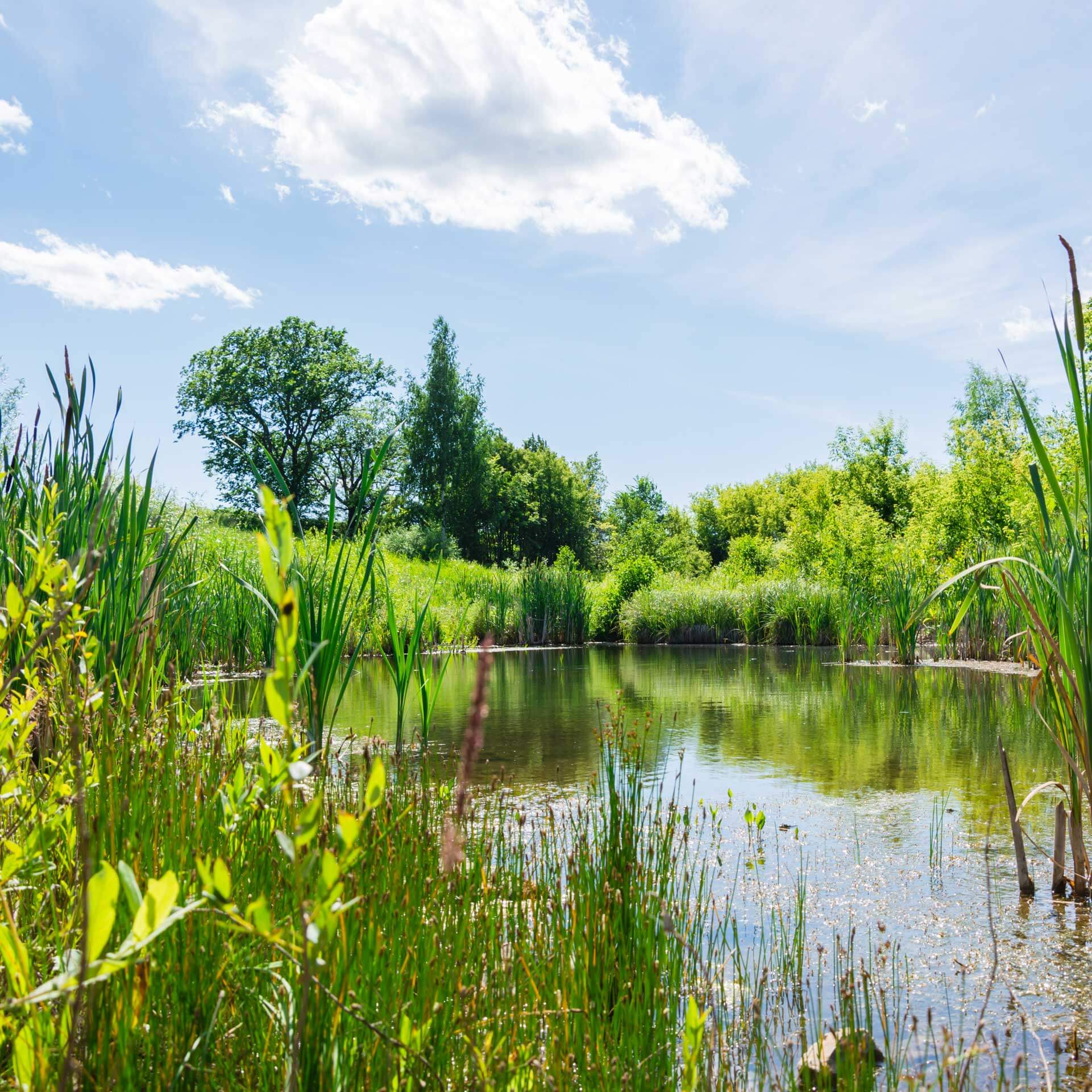Supreme Court's Manchester Ship Canal decision: Private nuisance could prompt water pollution claims and infrastructure investment
9th July 2024
The Topline
“The Supreme Court’s decision in Manchester Ship Canal v United Utilities Water is the latest example of the courts finding flexibility within the law to facilitate environmental protection. Against a backdrop of increased focus on the state of the UK’s waterways, this case could open the floodgates on private nuisance claims against public water undertakers, and could encourage much-needed investment in improved water infrastructure.”
Rachel Turnbull, Director, Regulatory & Compliance and Environment


Nuisance and environmental litigation come together in the Manchester Ship Canal case
Nuisance [1] has hit the legal headlines more in recent months than it has done in the years, and even decades, prior. At the same time, another key, growing trend has been sustainability/ESG-driven climate (or ‘green’) litigation. These topical and developing areas both come into play in the Supreme Court’s July 2024 decision in Manchester Ship Canal v United Utilities Water [2].
The Supreme Court has unanimously decided that the statutory scheme for regulating sewerage established by the Water Industry Act 1991 (the 1991 Act) doesn’t prevent the owner of a canal or other watercourse from bringing a private claim in nuisance or trespass when the course is polluted by discharges of foul water, even where there’s no negligence or deliberate wrongdoing on the part of the utilities company/statutory undertaker.
The case is the latest in a line demonstrating the courts’ increasing readiness – in England and Wales and internationally – to find flexibility within the law to facilitate environmental protection.
Noteworthy nuisance developments to date
As we reported last year, the Supreme Court in the Tate Modern case confirmed that visual intrusion and certain uses of property can amount to an actionable interference with land, and therefore to legal nuisance.
In Jalla v Shell, the Supreme Court considered what amounts to a ‘continuing’ nuisance. It confirmed that a continuing nuisance is one where there’s repeated activity by the defendant, or an ongoing state of affairs for which the defendant is responsible, which causes continuing undue interference with the use and enjoyment of the claimant’s land. In such cases, the cause of action accrues afresh on a continuing basis.
The case of Davies v Bridgend opened the door for nuisance claims in respect of Japanese Knotweed and potentially other environmental contaminants which may have been remedied, but arguably could still leave a residual blight on land.
In the last couple of months, the Supreme Court of New Zealand allowed claims in negligence, public nuisance and a novel ‘climate system damage’ tort, to proceed to trial against seven corporate defendants [3]. Those claims are made on the basis that the businesses are each involved either in an industry which releases greenhouses gases into the atmosphere or manufactures and supplies products which release greenhouse gases. The Supreme Court commented that, while the common law has not previously grappled with a crisis as all-embracing as climate change, in the 19th and early 20th centuries it had to deal with the impact of the industrial revolution. The industrial revolution forced the common law to deal with new, widespread risk and damage caused by air and water pollution and the escape of biohazards. The Supreme Court stated that the law’s response at the time was initially flawed, and so the law was revised. It noted that climate change engages comparable complexities. It said: “The principles governing public nuisance ought not to stand still in the face of massive environmental challenges attributable to human economic activity. The common law, where it is not clearly excluded, responds to challenge and change in a considered way, through trials involving the testing of evidence.” It’s anticipated that the New Zealand case could catalyse private and regulatory action, and could even prompt development of a new, climate damage-specific tort. It’s definitely one to watch.
Also recently, a case in Ireland has, for the first time, found wind turbine noise to constitute nuisance.
So, there’s no doubt that the law of nuisance is developing apace; and that there’s an appetite within courts across the UK and internationally, to facilitate environmental protection where the law allows.
Strategic ‘green’ litigation
As well as noteworthy recent nuisance cases, we’ve recently seen the so-called ‘Swiss grannies case’, in which the European Court of Human Rights found that Switzerland has taken inadequate steps to combat climate change and so has breached the human rights of an association of elderly Swiss women concerned by the impact of climate change. The decision has attracted a lot of media interest and it’s anticipated that it could lead to a flurry of human rights claims by interested associations challenging the failure of states to achieve, or set, adequate greenhouse gas targets and carbon budgets. That, in turn, could have a regulatory impact.
There’s also the continuing, high-profile litigation led by environmental campaigner Chris Packham; and various ongoing cases brought by environmental interest groups such as ClientEarth, the Good Law Project, Friends of the Earth, Uplift and Greenpeace, in which the UK government’s net zero strategy, it’s short-term policy and some of its case-specific decisions are currently all subject to litigation designed to bring about positive action to promote environmental protection.
Nuisance + environmental protection = Manchester Ship Canal v United Utilities Water
Against that legal backdrop, and alongside increased media focus on the state of the UK’s waterways, the Supreme Court was asked to consider a private nuisance claim brought against a statutory undertaker arising from unauthorised discharges into the Manchester Ship Canal.
In Manchester Ship Canal v United Utilities Water, the canal owner attempted to sue United Utilities in private nuisance, seeking an injunction or damages in respect of unauthorised discharges into the Manchester Ship Canal. The Court of Appeal had previously decided that it’s not possible to bring a private nuisance claim where, in practice, the remedy necessitates the construction of a better sewage system, because that’s something which is provided for under the utilities regulatory scheme and statutory remedies in the 1991 Act. On 2 July 2024, the Supreme Court disagreed.
The reasons for the Supreme Court’s judgments were several fold. In summary:
- A person’s rights to the peaceful enjoyment of its property is protected by the common law and by human rights laws. A statute will only authorise what would otherwise be an unlawful interference with property rights, or deprive a person of the right to bring a legal claim, if this is clear from, or is a necessary implication of, the express language used by Parliament.
- Parliament will not be taken to have intended that statutory powers should be exercised, or duties performed, in a way which interferes with private rights, unless the interference is inevitable.
- The 1991 Act does not expressly authorise United Utilities to cause a nuisance or to trespass by discharging foul water through the outfalls into the canal.
- Neither can the polluting discharges have been impliedly authorised by Parliament, as they’re not an inevitable consequence of a sewerage undertaker’s performance of its statutory powers and duties. The discharges could be avoided if United Utilities invested in improved infrastructure and treatment processes.
- The Supreme Court accepted that the regulatory scheme established by the 1991 Act might be disrupted if the court were to grant injunctions which required a sewerage undertaker to spend large sums on new infrastructure as a remedy for interferences with private property rights. However, this doesn’t mean that common law rights of action are excluded. Instead, the courts may award damages, both for past invasions of property rights and for future or repeated invasions of those rights, to vindicate property rights until the sewerage undertaker is in a position to invest in a long-term solution.
In a hotly anticipated judgment, therefore, the Supreme Court has decided that the statutory scheme for regulating sewerage established by the 1991 Act doesn’t prevent the owner of a canal or other watercourse from bringing a private claim in nuisance or trespass when the course is polluted by discharges of foul water, even where there’s no negligence or deliberate wrongdoing on the part of the utilities company/statutory undertaker.
The case could open the floodgates on private claims against water companies. Recent media focus on pollution incidents and water company failings has highlighted both the state of the UK’s waterways and the fact that public bodies responsible for policing and enforcing prohibitions on discharges are over-stretched and unable to act sufficiently as a result. The case suggests that private law nuisance remedies could act as a catalyst for claims and for investment in improved water infrastructure.
Water pollution/infrastructure: How we can support you
Water stress, pollution, and the environment generally are high on the agenda for all businesses in the current climate.
Walker Morris is a multi-disciplinary commercial law firm, with specialist lawyers experienced in infrastructure and energy, environmental issues, commercial contracts, corporate- and climate- reporting, and all other aspects of the sustainability agenda – from the compliance, transactional and investigatory/dispute resolution perspectives.
We can work with businesses at every step of their journey to create, implement and deliver an effective environmental strategy. In particular, we can:
- Help businesses with climate and water monitoring and reporting, including measuring water – and other sustainability-related risks.
- Undertake audits and contract reviews and draft/update policies, procedures and contracts from a sustainability perspective.
- Keep clients up-to-date on legal and regulatory developments associated with water stress and sustainability more generally.
- Help clients to secure ‘green finance’ or other responsible investments
- Provide commercially-focused, cross-disciplinary advice and transactional assistance in relation to water sustainability.
- Provide advice and assistance in relation to the design and planning of development schemes.
- Provide risk management and effective dispute resolution strategies – including bringing or defending claims or complaints, or in connection with regulatory investigations – if/when any water infrastructure, pollution or sustainability issues do arise.
For further information or tailored advice, please contact Nick McQueen or Rachel Turnbull.
[1] See Knotweed and nuisance Supreme Court update and Nuisance Tate Modern case
[2] 2024 UKSC 22
[3] (New Zealand law uses the English common law system and incorporates some English negligence and nuisance case law authorities.)










